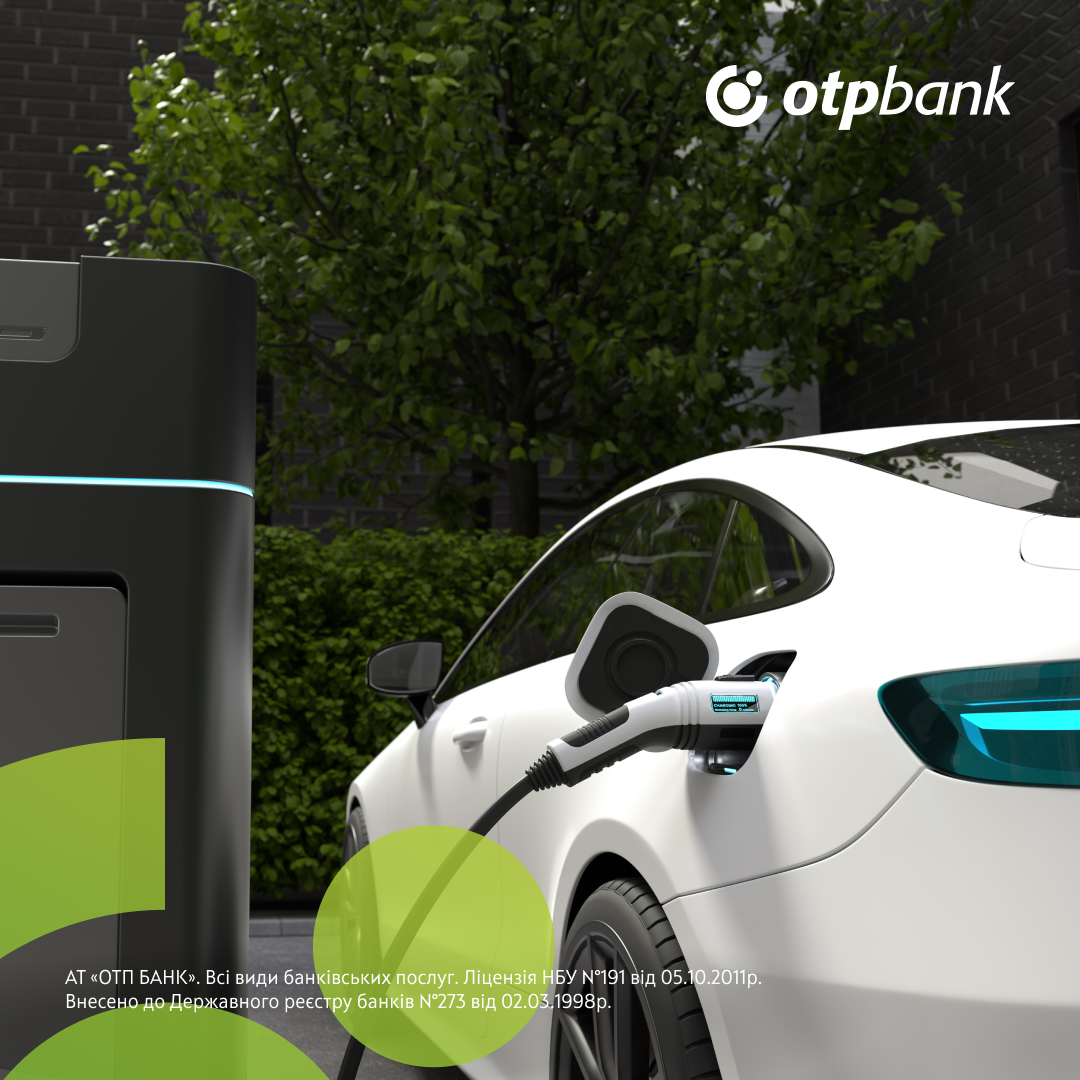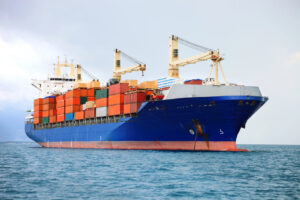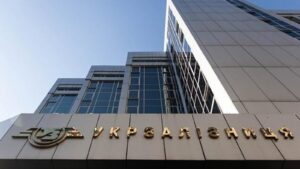
JSC OTP BANK offers favorable financing conditions for those who want to drive a modern and reliable used electric car as soon as possible without overpaying for a loan. The reduced interest rate is a strong argument in favor of purchasing an eco-friendly car with the support of the Bank, said Vitaliy Skorobohatyi, Head of Car Lending Development Department of OTP Bank.
“An electric car on credit is not only about the opportunity to become the owner of a car today and about comfort, but also about a profitable investment in the future. At OTP BANK, we have created conditions that really help our customers make this choice easier: a reduced interest rate, a minimum down payment, no requirements for hull insurance and car age. This means that you can buy an electric car quickly and without hidden overpayments. We are happy to support customers who choose environmentally friendly solutions,” said V. Skorobohatyi.

Terms of lending for used electric cars at OTP BANK:
Buying an electric car is not only about caring for the environment and sustainable development, but also about a number of benefits for the owner. Such cars combine modern technological solutions that make driving comfortable, convenient, and much quieter than traditional cars. It also saves on fuel and car maintenance.
How can I quickly find out my loan amount?
You can calculate the preliminary amount of financing in just one minute using a convenient bot or calculator on the OTP BANK website. The Bank’s specialists will provide detailed advice on the loan and help you choose the optimal term and amount of monthly payments.
The client receives the final decision of the Bank on the possibility of financing and the transfer of funds for the car within one day.
We would like to remind you that OTP BANK offers from UAH 10,000 to UAH 1,000,000 loan for any used car. It is also possible to become the owner of a new car from a car dealership with the support of the Bank. The motorcycle season is in full swing, so the financial institution has prepared favorable conditions for those customers who are interested in buying a motorcycle on credit.

The cost of insuring ships passing through the Red Sea has risen sharply after the resumption of attacks by the Houthis, the Financial Times writes, citing data from Marsh McLennan, the world’s largest insurance broker. According to the company, insurance premiums for risks reached 1% of the value of the ship against a maximum of 0.4% before the attack on the Greek cargo ship Magic Seas on July 6.As a result, the insurance of the ship worth $100 million rose from $300 thousand to about $1 million per voyage, said Marcus Baker of Marsh McLennan.The attack on the Magic Seas, owned by Greek Stem Shipping, was the first since December last year. The ship caught fire and sank in an attack using small arms and rocket-propelled grenades, as well as unmanned boats packed with explosives. Another Greek vessel, the Eternity C, was attacked on Monday, killing three crew members. The Houthis have not yet claimed responsibility for the second attack.Baker warned of further increases in insurance rates if transit through the Red Sea continues. The region remains critical to global trade, and escalation threatens to spike oil prices and disrupt supplies.

Bitcoin: a new high and institutional growth
Ethereum and altcoins
Overall trend: the bull market continues
Forecasts for July 2025
Source: https://www.fixygen.ua/news/20250710/oglyad-lipnevih-trendiv-na-rinku-kriptovalyut-vid-fixygen.html

On July 9, the municipal enterprise Cherkasyelectrotrans announced its intention to conclude a contract with IC Euroins Ukraine for the purchase of services of compulsory civil liability insurance of owners of land vehicles (OSAGO). According to the electronic public procurement system “Prozorro”, the company’s price offer amounted to UAH 1.19 million against UAH 1.681 million of the expected cost of purchasing the service.
IC “Euroins Ukraine” is a universal insurance company, which has been operating in the Ukrainian market since 1992. It is a part of Bulgarian insurance group Euroins, one of the largest independent insurance groups in the countries of Central, Eastern and South-Eastern Europe.
Cherkasielektrotrans, IC Euroins Ukraine, INSURANCE, TRANSPORTATION

Ukrzaliznytsia JSC (UZ) paid the coupon payment on its 2026 Eurobonds due on July 9 in full and on time, said Oleksandr Pertsovsky, Chairman of the Board of the company.
On the sidelines of the panel discussion “No Security – No Recovery” organized by the Pinchuk Foundation and YES on the sidelines of URC2025, he emphasized that the company was fulfilling its obligations despite the deterioration in liquidity.
The day before, UZ announced that it would pay coupons due on July 9 and 15 on its Eurobonds maturing in 2026 and 2028, respectively, although in Q1 2025, EBITDA reached negative territory due to a drop in cargo volumes (-17% year-on-year compared to Q1 2024) and a rapid increase in operating expenses.
“Since the beginning of the year, available cash has decreased significantly, increasing the need for financing from international financial institutions to cover critical capital investments and liquidity needs during the ongoing war,” the press service said.
“Without such support from strategic partners, the company would likely not have been able to fulfill its financial obligations to Eurobond holders,” the press release said.
In addition, it was noted that Ukrzaliznytsia has engaged a financial advisor and is seeking a solution to its Eurobonds through negotiations with the Eurobond holders in order to achieve appropriate debt relief and mitigate liquidity challenges in the coming years.
In January 2025, Ukrzaliznytsia capitalized the postponed coupon payments on the 8.25% Eurobonds 2026 in the amount of $108.28 million and the 7.875% Eurobonds 2028 in the amount of $51.9 million as a result of the restructuring in 2022.

Ukrainian President Volodymyr Zelensky said about 200 deals are being prepared for the Ukraine Recovery Conference, which is taking place in Rome on July 10-11 (URC2025) for a total amount of EUR10 bln.
“More than 500 companies are represented here at the conference. About 200 deals are ready to be signed with a total value of more than EUR10 billion. All of these should be fully realized. And please, let’s also focus on energy,” Zelensky said at the plenary session of the Ukraine Recovery Conference in Rome (URC2025) on Thursday.